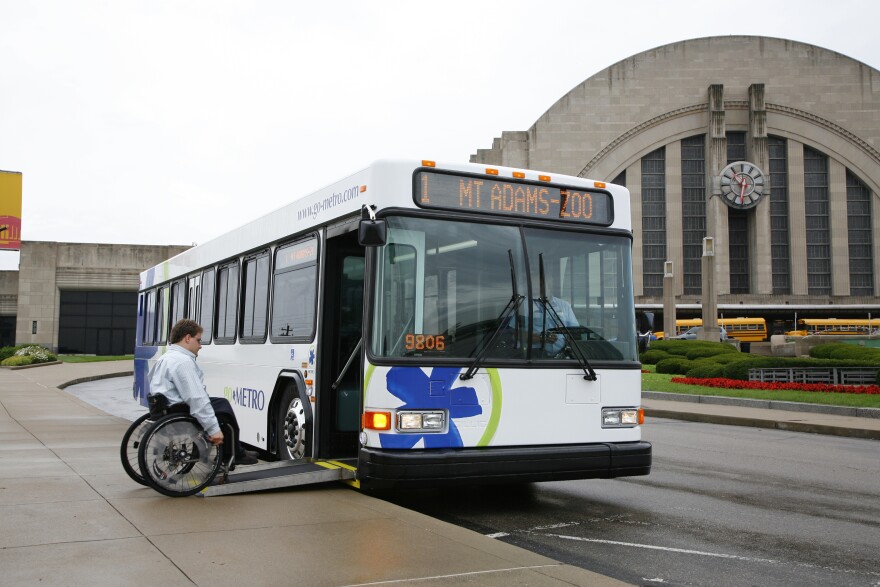The Ohio Developmental Disabilities Council released a study that showed more than half of respondents felt they couldn't be more active in the community until transportation services were improved.
"We talk a lot about being included in the community, but to be able to participate in the community you have to be able to get there," says Mark Seifarth, chair of the council. "You've got to get to volunteer possibilities. You've got to get to your job. You've got to get to the store. You've got to interact with people in the community."
The study was part of a broader survey of 534 people with disabilities, plus transportation providers and members of groups that serve people with disabilities across 63 counties in Ohio.
Among the study's findings was that transportation barriers are threefold: Many people with disabilities can't use cars, but also don't have access to ride shares like Uber or Lyft and can't use non-medical Medicaid to pay for those services.
In addition, public transportation is not as accessible as it needs to be. For example, Seifarth says that many people with disabilities can't read bus schedules.
"We've got to do a better job figuring out how to educate people with disabilities in order to use public transportation, because not everybody with a disability is a person who can read," he says.
Over half the survey's respondents said they waited at least 30 minutes or more for some kind of a ride, according to Seifarth. And that compounds other existing barriers.
"Makes them late for work, makes them late for appointments, means they can't get anywhere," he says.
Franklin and Hamilton counties, which contain Columbus and Cincinnati, boasted the highest concentration of respondents. Seifarth says barriers differ in rural and urban settings.
"In the rural setting, you may not have any options at all, or your options are very few," he says. "Columbus does have COTA. There is transportation, there is Mainstream for folks with significant disabilities - that's a paratransit service that will come to your house if you have a disability and you're eligible."
In the rural areas, however, Seifarth says his group had to work with many providers to make transportation available. Part of the challenge is that much of the country's infrastructure is car-based, especially in the Midwest.
But Seifarth says that even car makers are starting to realize that's changing, and investing in major transportation systems or initiatives like driverless cars. That promises to allow people to access transportation in different ways.
"Yes, it is baked in the system, but it isn't baked in the system for good," Seifarth says. "In the state of Ohio, we're all starting to work across lines and across institutions."






